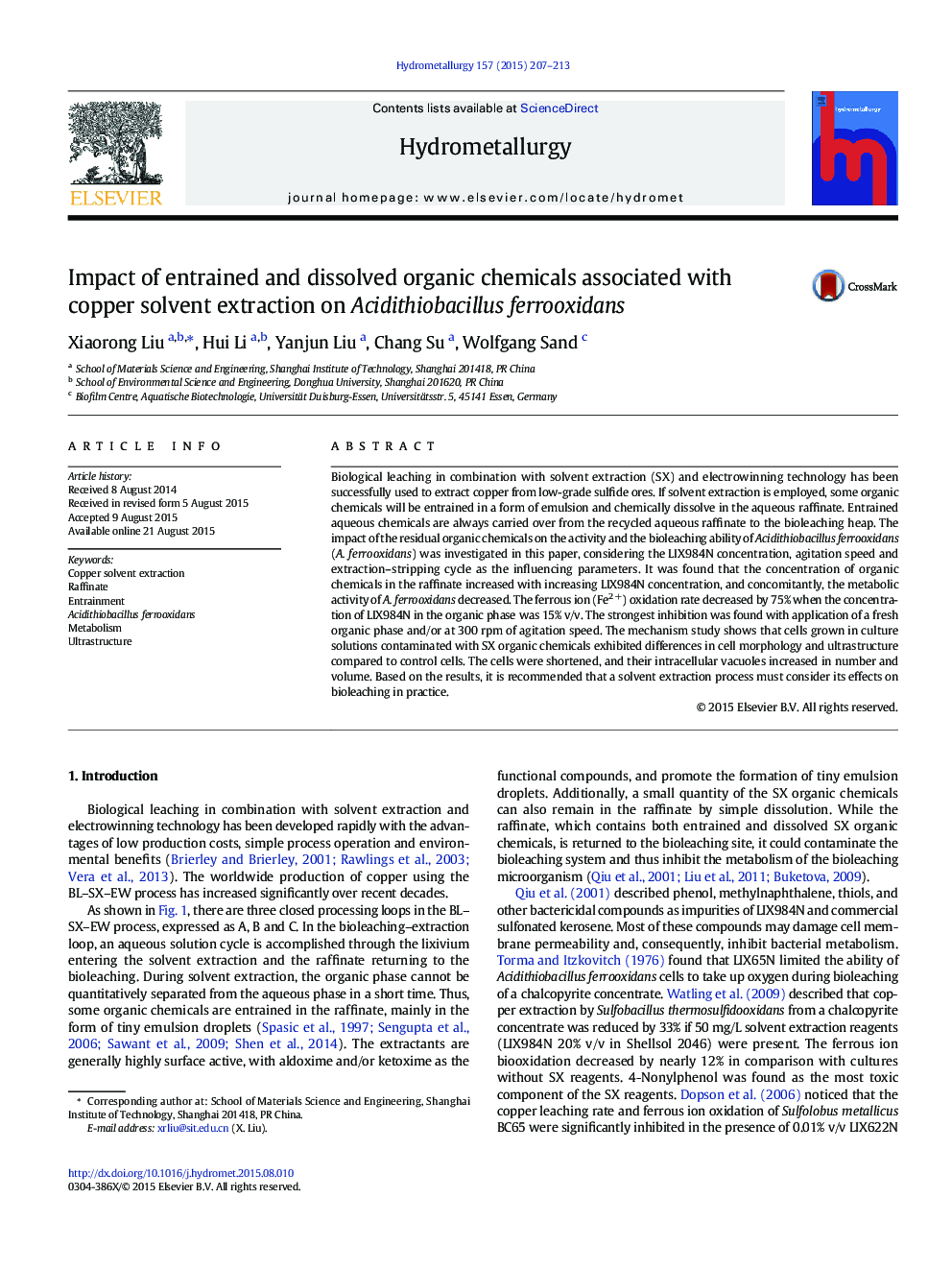| Article ID | Journal | Published Year | Pages | File Type |
|---|---|---|---|---|
| 6659276 | Hydrometallurgy | 2015 | 7 Pages |
Abstract
Biological leaching in combination with solvent extraction (SX) and electrowinning technology has been successfully used to extract copper from low-grade sulfide ores. If solvent extraction is employed, some organic chemicals will be entrained in a form of emulsion and chemically dissolve in the aqueous raffinate. Entrained aqueous chemicals are always carried over from the recycled aqueous raffinate to the bioleaching heap. The impact of the residual organic chemicals on the activity and the bioleaching ability of Acidithiobacillus ferrooxidans (A. ferrooxidans) was investigated in this paper, considering the LIX984N concentration, agitation speed and extraction-stripping cycle as the influencing parameters. It was found that the concentration of organic chemicals in the raffinate increased with increasing LIX984N concentration, and concomitantly, the metabolic activity of A. ferrooxidans decreased. The ferrous ion (Fe2Â +) oxidation rate decreased by 75% when the concentration of LIX984N in the organic phase was 15% v/v. The strongest inhibition was found with application of a fresh organic phase and/or at 300Â rpm of agitation speed. The mechanism study shows that cells grown in culture solutions contaminated with SX organic chemicals exhibited differences in cell morphology and ultrastructure compared to control cells. The cells were shortened, and their intracellular vacuoles increased in number and volume. Based on the results, it is recommended that a solvent extraction process must consider its effects on bioleaching in practice.
Related Topics
Physical Sciences and Engineering
Chemical Engineering
Chemical Engineering (General)
Authors
Xiaorong Liu, Hui Li, Yanjun Liu, Chang Su, Wolfgang Sand,
